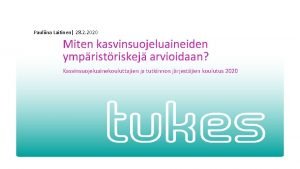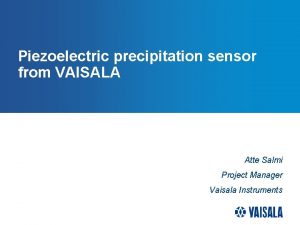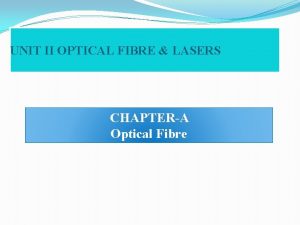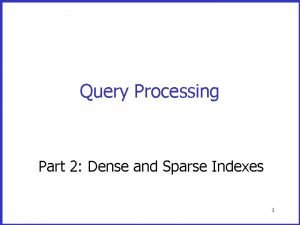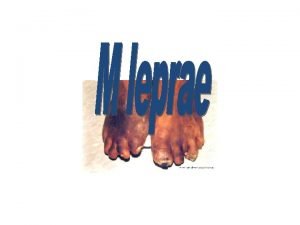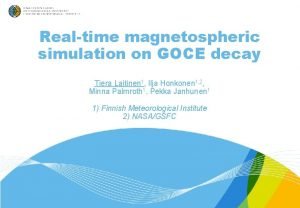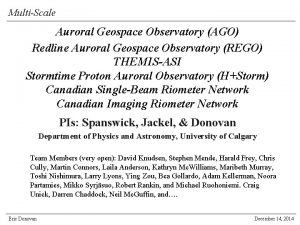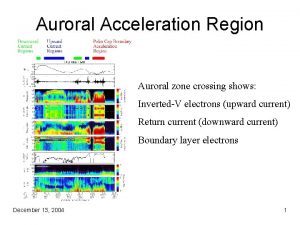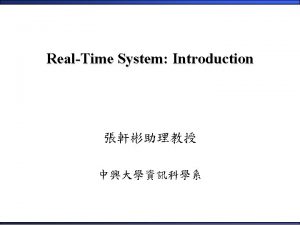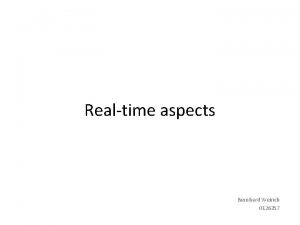New realtime auroral activity index Tiera Laitinen Atte











- Slides: 11

New real-time auroral activity index Tiera Laitinen, Atte Kapanen, Kirsti Kauristie, Ari Viljanen ESWS 2020

Why? Northern Europe has a dense network of magnetometers providing real-time data. Geomagnetic variations are known to correlate with auroras, so this asset can be used as a basis for an aurora nowcast service. FMI has provided such a service, Auroras Now, since 2003. It uses data from the Finnish stations. When the time derivative of the horizontal magnetic exceeds a threshold, it is marked red: auroras likely! The service has thousands of daily visitors during the dark season. Can we make it more accurate? d. H/dt for 24 h at Kilpisjärvi, Lapland IMAGE magnetometer network 2

146747 ASC images All-sky camera images from 3 stations, 139 auroral events, 463 hours, were visually examined and classified. This created a dataset of auroral occurrence, which we could then compare against simultaneous geomagnetic variations. Image classification: 1. Bright or complex auroras 2. Dim auroras 3. Dark sky 4. Cloudy or otherwise unclear KEV = Kevo, 70° N MUO = Muonio, 68° N HAN = Hankasalmi, 62° N 3

What to do with magnetic data? Variation of magnetic field, but how exactly measured? Time derivative, range or something else? What time resolution? Over what time interval? Which components? Possible answers to these questions result in hundreds of combinations to test. Each possible combination is called an index candidate. 4

Does not matter, everything works! An index candidate is one number, as a function of time, calculated from an interval of geomagnetic data. We tested hundreds of index candidates by calculating their rank correlation with the auroral occurrence. The differences were small. But one has to choose a formula for the index, so we analysed the tiny differences in rank correlation… …and applied also some heuristic and practical arguments, such as simplicity, to arrive at the formula for the index. (Next slide!) 5

Definition The auroral activity index R at time t = 0 is calculated as: Here X, Y and Z are 10 second averages of the North, East and down components of the geomagnetic field in nanoteslas. δX(t) = X(t) – X(t – 10 s), and similarly for Y and Z. If the result is divided by 1350, it can be interpreted as a component-wise average absolute time derivative in units of n. T/s. 6

Thresholds What values of R indicate good probability of auroras? We calculated R for each minute in our dataset of classified ASC images. Then we divided the minutes in bins in order of ascending R. For each bin we calculated the percentages of minutes with • p 1: bright auroras (red) • p 2: dim auroras (green) • p 3: no auroras (gray) We set two threshold values: • R 1 where p 1 + p 2 = 50 % (any auroras) • R 2 where p 1 = 50 % (strong auroras). R 2 R 1 7

Interpolation of thresholds The thresholds must be determined for each location separately. For those magnetometer stations where we do not have suitable ASC dataset available, we have to interpolate or extrapolate. We do this as a function of magnetic latitude. Differences in local conditions such as camera properties may weaken the comparability of threshold values. Even local ground conductivity may affect the magnitude of geomagnetic variations. These interpolated thresholds can only be considered as indicative. = empirical data point. Others interpolated. 8

Performance as a nowcast The bars illustrate the performance of R in nowcasting auroras, using the same dataset that was used in the study. (Not a good practice; perhaps later we analyse more images to get an independent test dataset. ) The high bars on the diagonal are correct nowcasts. The almost non-existent bars in the corners are ”completely wrong”: nowcasting strong auroras when the sky is dark, or vice versa. The intermediate bars are ”a little bit wrong”: nowcasting weak auroras when they are strong, or nowcasting no auroras when there are weak ones, or vice versa. 9

Questions? Is it available in real time? Not yet, but we plan to implement it. as A modified Kendall rank ts correlation, neglecting tied pairs and cloudy images. Because auroras are called ”revontulet” in Finnish. And a capital R looks better than a lower case one. Can we use it outside Finland? Which rank correlation On l did you use? ent y for m h usi Why is it called R? ath Who paid for it? ESA SSA programme did. Yes, but you should first make a similar statistical study to find out the correct local threshold values. The same thresholds for all local times? An interesting question. In this study we lumped all local times together, but we would like to investigate if evening and morning hours have statistical differencies. 10

The end. Thanks for reaching this slide! For further information, please contact Tiera Laitinen, tiera. laitinen@fmi. fi ESWS 2020
